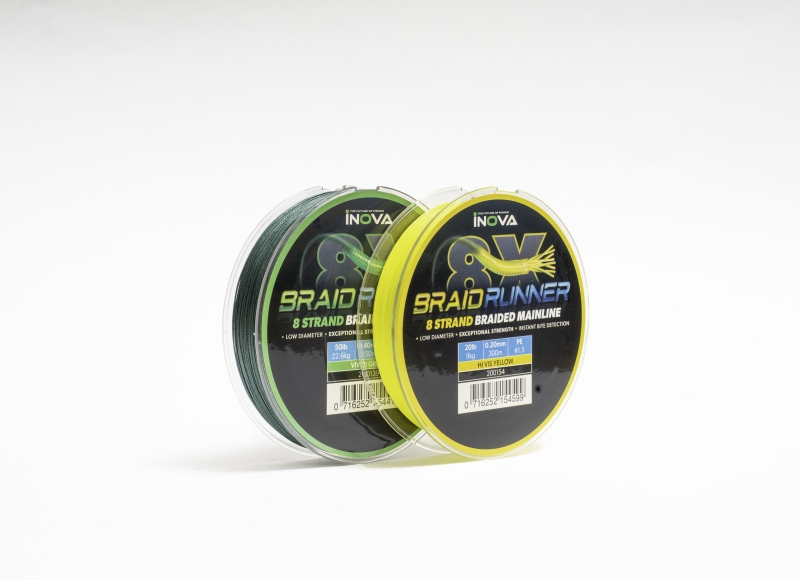Tips for Properly Spooling Braid on Your Reel for Maximum Efficiency
When fishing, having your reel spooled correctly with a braided fishing line can make all the difference. Whether you’re sea fishing or targeting freshwater species, properly spooling fishing braid can improve casting distance, reduce line tangles, and give you better control over your catch. In this guide, we’ll walk you through essential tips for spooling braid on your reel to ensure maximum efficiency during your fishing adventures.
1. Choose the Right Fishing Braid
Before you even start spooling, it’s essential to select the right type of braided fishing line for your needs. Braided lines come in various strengths, diameters, and colours, so consider your fishing environment and target species. For sea fishing, opt for a sea fishing braid that is strong and durable, as you’ll be dealing with larger fish and rougher conditions.
Braided lines have a much thinner diameter than monofilament, which allows for more lines on your reel without sacrificing strength. This is especially beneficial for anglers who require a high line capacity for deep-sea fishing or long-distance casting.
2. Prepare the Reel and Line
Proper preparation is key to preventing issues while spooling your reel with a braided line. Start by securing the fishing braid to your reel’s spool. Most fishing reels require a base layer of monofilament backing to prevent the braid from slipping on the spool.

- Why Use Monofilament Backing? A braided fishing line has little to no stretch, which means it can easily slip around the spool if not secured correctly. By adding a few layers of monofilament before spooling the braid, you create a non-slip surface for the braid to grip. Secure the monofilament line with a simple knot, then tie the braided line to the backing using a double uni-knot or an Albright knot for a secure connection.
3. Maintain Proper Tension
One of the most common mistakes anglers make when spooling braided fishing lines is failing to maintain proper tension throughout the process. Loose or unevenly spooled braids can cause line tangles, and wind knots, and reduce casting distance. To prevent this, apply consistent pressure as you spool the line onto the reel.
- How to Maintain Tension: You can use a line spooler tool to keep even tension, or simply run the braid through a damp cloth held between your fingers while spooling. This ensures that the line is packed tightly and evenly, reducing the risk of backlash and wind knots during casting.
4. Fill the Spool to the Correct Level
It’s important not to overfill or underfill the reel spool with a fishing braid. A properly filled spool improves casting efficiency and minimizes the risk of tangles. As a general rule, fill the reel spool until it’s about 1/8th of an inch below the rim of the spool.
- Why Is This Important? Overfilling your reel with too much sea fishing braid can lead to frequent tangles and bird’s nests during casting. On the other hand, underfilling reduces your casting distance and can affect the overall performance of your reel.
5. Use Line Conditioner
A braided fishing line can sometimes feel stiff or coarse, especially when it’s brand new. To soften the line and improve its performance, consider using a line conditioner before and after spooling. A line conditioner helps reduce friction, making the braid smoother and easier to cast. It also enhances the durability of the line, especially when exposed to saltwater during sea fishing.
- Tip: Spray the conditioner lightly on the braid while it’s on the spool and let it sit for a few minutes before use. This will make the braid more manageable and reduce the chances of tangling.
6. Check for Line Twist
Line twist is another common problem anglers face, particularly with braided fishing lines. When spooling your reel, keep an eye on the line and check for any twists as it feeds onto the spool. Braided lines are less prone to twisting compared to monofilament, but it can still occur if not careful.
- How to Prevent Line Twist: If you notice the line starting to twist, stop spooling and remove the twist by running the line between your fingers or using a line straightener tool. Keeping the spool of the braid horizontal while spooling can also help prevent twisting.
7. Perform a Line Test Before Fishing
Before heading out to fish, it’s a good idea to test your setup. Cast a few times and check how the braided line behaves. If you notice any wind knots or tangles, you may need to re-tension the line or adjust the spool level.
- Why Is This Important? Testing your sea fishing braid setup ensures that you’re ready for smooth casting and retrieval, helping you avoid frustration while on the water.
8. Regularly Check for Wear and Tear
Braided fishing lines are known for their strength and abrasion resistance, but that doesn’t mean they’re immune to wear. Regularly inspect your braided line for signs of fraying, especially if you fish in rough environments like rocky shorelines or around coral reefs.
- Tip: If you notice any weak spots or frayed sections, cut off the damaged portion and re-tie your terminal tackle. This ensures that your sea fishing line remains strong and reliable during your fishing trips.
Conclusion
Spooling braid on your reel properly is crucial for maximizing performance and efficiency while fishing. By choosing the right braided Fishing line, maintaining tension, and taking care to spool it evenly, you’ll enjoy longer casts, fewer tangles, and a better overall fishing experience. Follow these simple tips, and you’ll be well-prepared for your next fishing adventure with a perfectly spooled reel and reliable sea fishing braid.






